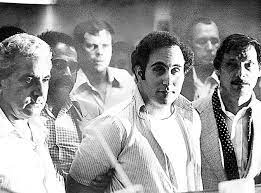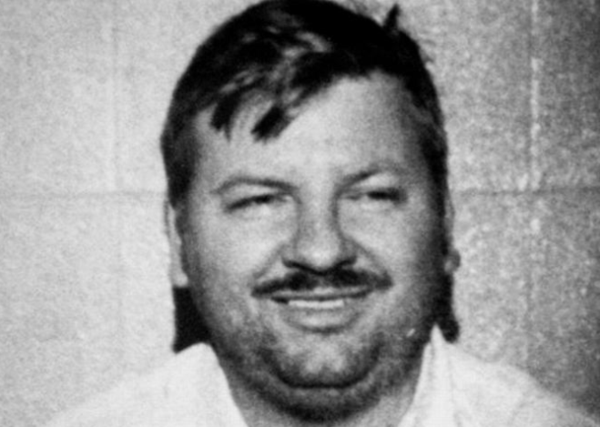Find a term:
Find Terms & Definitions.
Murder is the unlawful killing of another human person with malice aforethought, as defined in Common Law countries. Murder is generally distinguished from other forms of homicide by the elements of malice aforethought and the lack of lawful justification. All jurisdictions, ancient and modern, consider it a most serious crime and therefore impose severe penalty on its commission.
The Psychology of Murder
Murder is the unlawful killing, with malice aforethought, of another human being. When a person, of sound memory and discretion, unlawfully kills any reasonable creature in being with malice aforethought includes four basic elements:
1.) Intent to kill,
2.) Intent to inflict grievous bodily harm.
3.) Reckless indifference to an unjustifiably high risk to human life. Under state of mind, an “abandoned and malignant heart”, the killing may result from defendant’s conduct involving a reckless indifference to human life and a conscious disregard of an unreasonable risk of death or serious bodily injury.
4.) Reckless abandon while perpetrating a dangerous felony.
A murderer is someone who looks fairly normal but whose brain operates much differently than the general population. People who commit murders often kill to assert power and be noticed. They often will do this in order to punish some person or group of people that they are unhappy with or fearful of. Those convicted of murder often do not display guilt for their heinous actions. A lot of these killers have no guilt whatsoever. They feel like it is okay for them to do it because they perceive that they are special. Murderers usually don’t just snap. Their crimes are carefully thought out and planned in an evil heart.
Source: pleasantonexpress.com
Definition
Common law murder is defined as the:
1. unlawful
2. killing
3. of another human person
4. with a state of mind known as “malice aforethought.”
The first three elements are relatively straightforward; however, the concept of “malice aforethought” is a complex one that does not necessarily mean premeditation.
Malice Aforethought
The following states of mind are recognized as constituting the various forms of “malice aforethought”:
(i) Intent to kill; (ii) Intent to inflict serious bodily harm short of death; (iii) Reckless indifference to an unjustifiably high risk to human life (sometimes described as an “abandoned and malignant heart”); or (iv) Intent to commit a dangerous felony (the “felony-murder” doctrine).

“I don’t feel guilty for anything. I feel sorry for people who feel guilt.” (Ted Bundy)
“You don’t understand me. You are not expected to. You are not capable of it. I am beyond your experience. I am beyond good and evil. I don’t believe in the hypocritical, moralistic dogma of this so-called civilized society.” (Richard Ramirez)
State of Mind
Under state of mind (i), intent to kill, the deadly weapon rule applies. Thus, if the defendant intentionally uses a deadly weapon or instrument against the victim, such use authorizes a permissive inference of intent to kill. An example of a deadly weapon or instrument is a gun, a knife, or even a car when intentionally used to strike the victim.
Under state of mind (iii), an “abandoned and malignant heart,” the killing must result from defendant’s conduct involving a reckless indifference to human life and a conscious disregard of an unreasonable risk of death or serious bodily injury. An example of this is a 2007 law in California where an individual could be convicted of second-degree murder if he or she kills another person while operating a motor vehicle while being under the influence of alcohol, drugs, or controlled substances.
Under state of mind (iv), the felony-murder doctrine, the felony committed must be an inherently dangerous felony, such as burglary, arson, rape, robbery or kidnapping. Importantly, the underlying felony cannot be a lesser-included offense such as assault, otherwise all criminal homicides would be murder as all criminal homicides are felonies.
The Psychology of Murder
Serial killers characteristically lack empathy for others, coupled with an apparent absence of guilt about their actions. At the same time, many can be superficially charming, allowing them to lure potential victims into their web of death. One explanation for such cognitive dissonance is that serial killers are individuals in whom two minds co-exist—one a rational self, able to successfully navigate the intricacies of acceptable social behavior and even charm and seduce, the other a far more sinister self, capable of the most unspeakable and violent acts against others. There is little evidence however, that real-life serial killers suffer from dissociative identity disorder, in which an individual has two or more personalities cohabiting in their mind, apparently unaware of each other.
The Visionary Killer

The –Visionary Killer– commits murder at the command of imagined internal or external voices which they experience and perceive to be real. Their victims are usually selected at random and they are considered an ‘unorganized’ killer. Some visionary killers believe that they are someone else while others murder at the behest of entities such as the Devil or God.
David Berkowitz, the Son of Sam, killed at the behest of Harvey, a black Labrador retriever owned by his neighbor. He believed that the dog was a demon sending him murderous messages in its incessant nocturnal barking.
Berkowitz was diagnosed with paranoid schizophrenia
The Hedonistic Killer
The –Hedonistic Killer– commits murder out of lust. Sex is the primary motivation for hedonist lust killers regardless of whether the victims are alive or dead. Necrophilia is a frequent aspect of hedonistic lust killers as well as mutilation and cannibalisms. Lust killers typically need intimate contact in their killings and often use strangulation to murder their victims. They are highly organized killers, often fantasizing and rehearsing the murder in their minds for years before actually killing their first victim. Jeffrey Dahmer is the poster child for this kind of serial killer.
The –Hedonistic Killer– can also a thrill killer. Thrill-killers are not in it for sexual gratification, but for the rush they get from planning and committing their crimes. They don’t drag out the process, nor do they seem to spend a lot of time picking their victims. Many times the crime is spontaneous, though the killer will sometimes follow potential victims of a period of time. The pleasure isn’t sexual, but rather is connected to the power and control of taking a life. The Zodiac Killer was a thrill-seeker who wrote in one of his letters that the rush of killing was even better than sex.
source: thisinterestsme.com | strandmag.com | listverse.com
One puzzling aspect of serial killers’ minds is the fact that they appear to lack—or they can mentally override—the emotional responses that in other people allows us to identify the pain and suffering of other humans as similar to our own and empathize with that suffering.
A possible explanation of this deficit was identified in a recent brain imaging study. This showed that criminal psychopaths had decreased connectivity between the amygdala—a brain region that processes negative stimuli and those that give rise to fearful reactions—and the prefrontal cortex, which interprets responses from the amygdala. When connectivity between these two regions is low, processing of negative stimuli in the amygdala does not translate into any strongly felt negative emotions. This may explain why criminal psychopaths do not feel guilty about their actions, or sad when their victims suffer.
The Psychology of Murder
Serial killers also seem to possess an enhanced emotional drive that leads to an urge to hurt and kill other human beings. This apparent contradiction in emotional responses still needs to be explained at a neurological level. At the same time, we should not ignore social influences as important factors in the development of such contradictory impulses. It seems possible that serial killers have somehow learned to view their victims as purely an object to be abused, or even an assembly of unconnected parts.
The Mission-oriented Killer

The –Mission-Oriented Killer– is someone who kills in order to “rid” society of a specific group of people. They may target a certain ethnicity or religion. Or they might target sex workers or homosexuals.
These kind of killer often believe that they are doing society a favor. In their minds, it is their mission to kill these people. As a result, they typically won’t stop until they have been killed or caught.
The Mission-Oriented killer is not as a rule psychotic. They are not out of touch with reality. He does not suffer from hallucinations or delusions. No entity, neither God nor the devil, is commanding him to commit these acts. His decision to kill belongs solely to him. He knows exactly what he is doing.
Hitler is a prime example.
The Power/Control Killer
The –Power/Control Killer– seeks to dominate their victims. In a lot of cases, these men have feelings of inadequacy and powerlessness. They fear rejection. Many of them were abused as children. Dominating their victims and eventually taking their lives gives them a feeling of empowerment.
The power/control killer is organized, patient and meticulous. Stalking is common with power/control killer.
Rape is also common with these men, although it is not for their sexual pleasure. This killer uses the assault to again exert power and control over their victims. It is the act of dominating someone, removing any choices from them that gives them a rush.
The power/control killer often engages in necrophilia, trophy collecting and take pictures of his kill.
Examples of the power/control killer would be Gary Ridgway, John Wayne Gacy and Dennis Rader.
This might explain why some killers have sex with dead victims, or even turn their bodies into objects of utility or decoration, but it does not explain why they seem so driven to hurt and kill their victims. One explanation for the latter phenomenon is that many serial killers are insecure individuals who feel compelled to kill due to a morbid fear of rejection. In many cases, the fear of rejection seems to result from having been abandoned or abused by a parent. Such fear may compel a fledgling serial killer to want to eliminate any objects of their affections. They may come to believe that by destroying the person they desire, they can eliminate the possibility of being abandoned, humiliated or otherwise hurt, as they were in childhood.
Serial killers also appear to lack a sense of social conscience. Through our parents, siblings, teachers, peers, and other individuals who influence us as we grow up, we learn to distinguish right from wrong. It is this that inhibits us from engaging in anti-social behavior. Yet serial killers seem to feel they are exempt from the most important social sanction of all—not taking another person’s life.
Source: blog.oup.com |
This site contains affiliate links. We may, at no cost to you, receive a commission for purchases made through these links


























































